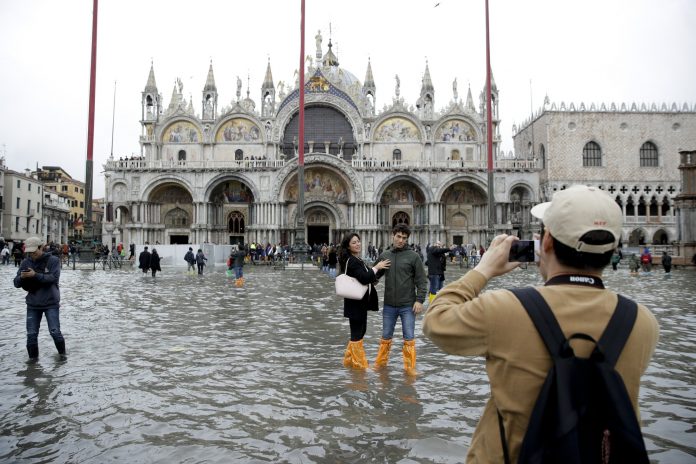Venice Italy has always been a very popular tourist destination. Visiting Venice is arguably on every traveler’s bucket list. Recently the city has been hit by one of the worst floods it has seen. Many of the tourist attractions in Venice were kept at bay by the floods. The city is famed for its ancient buildings and monuments. St Mark’s Square is one of the most popular attractions in Venice. Unfortunately, the floods have made it unreachable.
Venice’s local authorities have issued travel advisories on the city. They are strongly discouraging non-essential visits to the city. Venice travel experts and local are however saying that the city is good to receive visitors. The waters have cleared and most of the premises have resumed their normal operations. Galleries and museums are open, and the public transport systems are back to normal operations. The authorities might be concerned about damaged city systems though. They might be afraid the fragile city systems might crumble is overburdened as a result of a large influx of people.
Why Did it Flood in the First Place?
Many people have never heard of floods in Venice. It a common phenomenon in Venice though. It happens a couple of times in a year, especially during the transition from autumn to spring. The phenomenon is called Acqua alta, which loosely translates into “high water”. It usually is the convergence of strong northern winds across the Adriatic Sea and high tides. The result is water being pushed into the Venetian Lagoon and observed as floods in Venice city and other nearby areas.
The floods are normally very little water washes over pavements, and will not affect normal operations of the city. They do not receive a lot of attention, and will actually be a tourist attraction. This year’s Acqua alta received attention and was termed as flooding because the waters were very high. People were pictured wading through knee-high waters. The large volumes of water were definitely going to stall city operations, and possibly damage some of the city systems. The last time Acqua alta was that high was in 2008.
Experts say that the worst part of the flood is over though. You do not have to stay home if you had planned on visiting Venice. It would actually be a great experience to experience the Acqua alta. Despite the flooding, Venice remains one of the most popular tourist destinations in the world.











